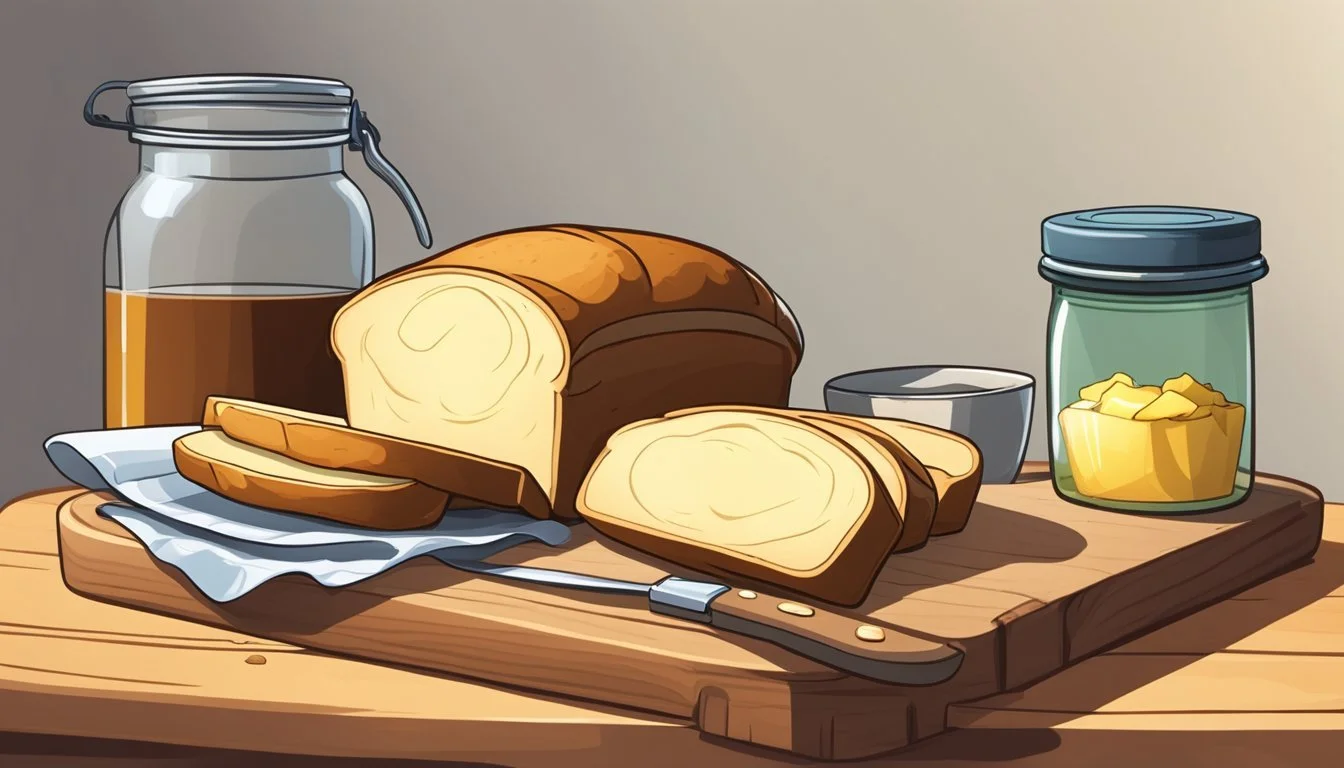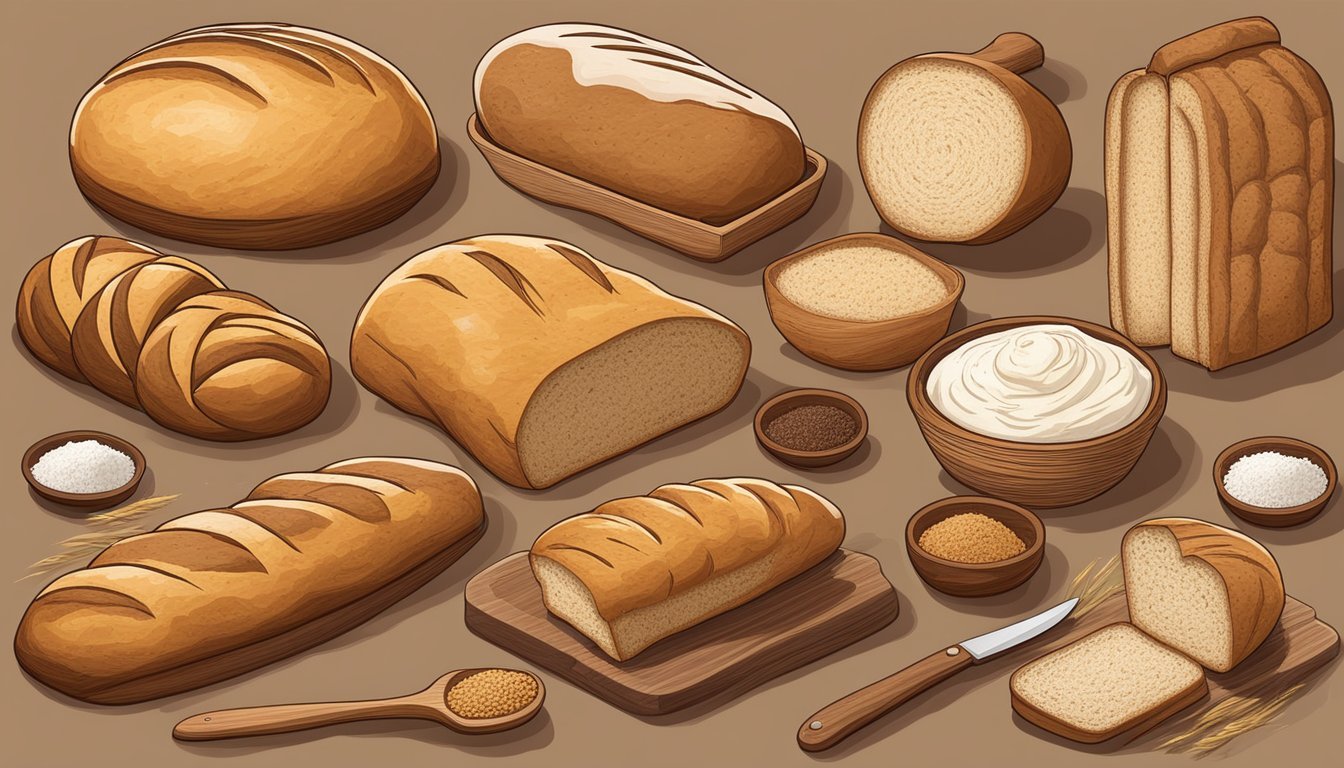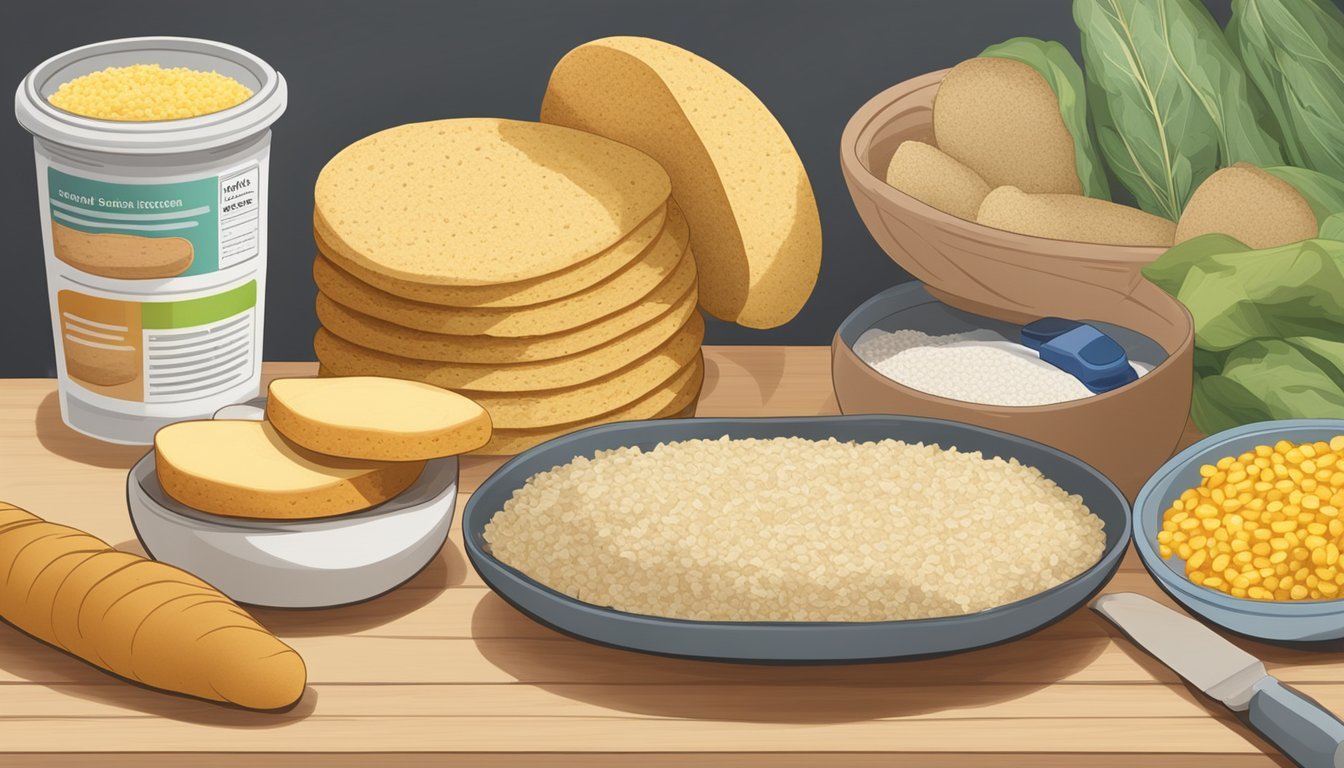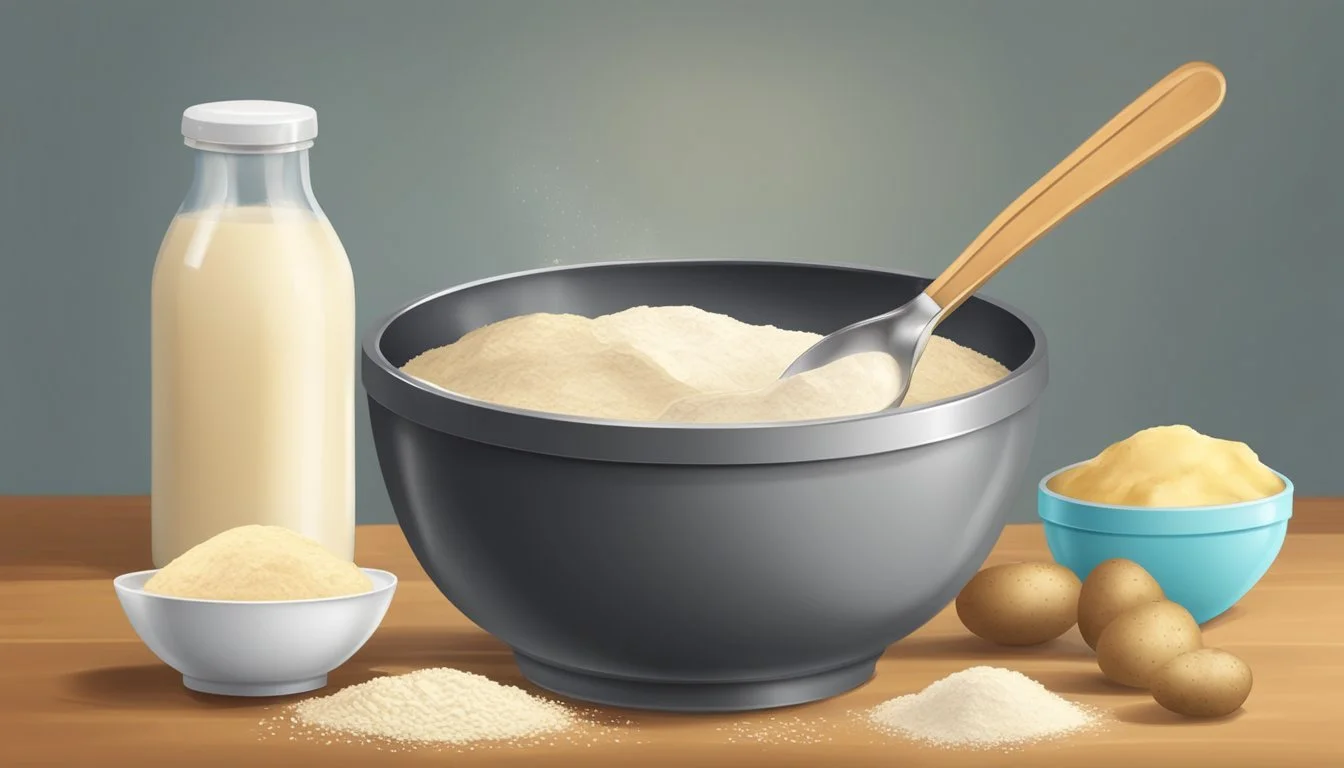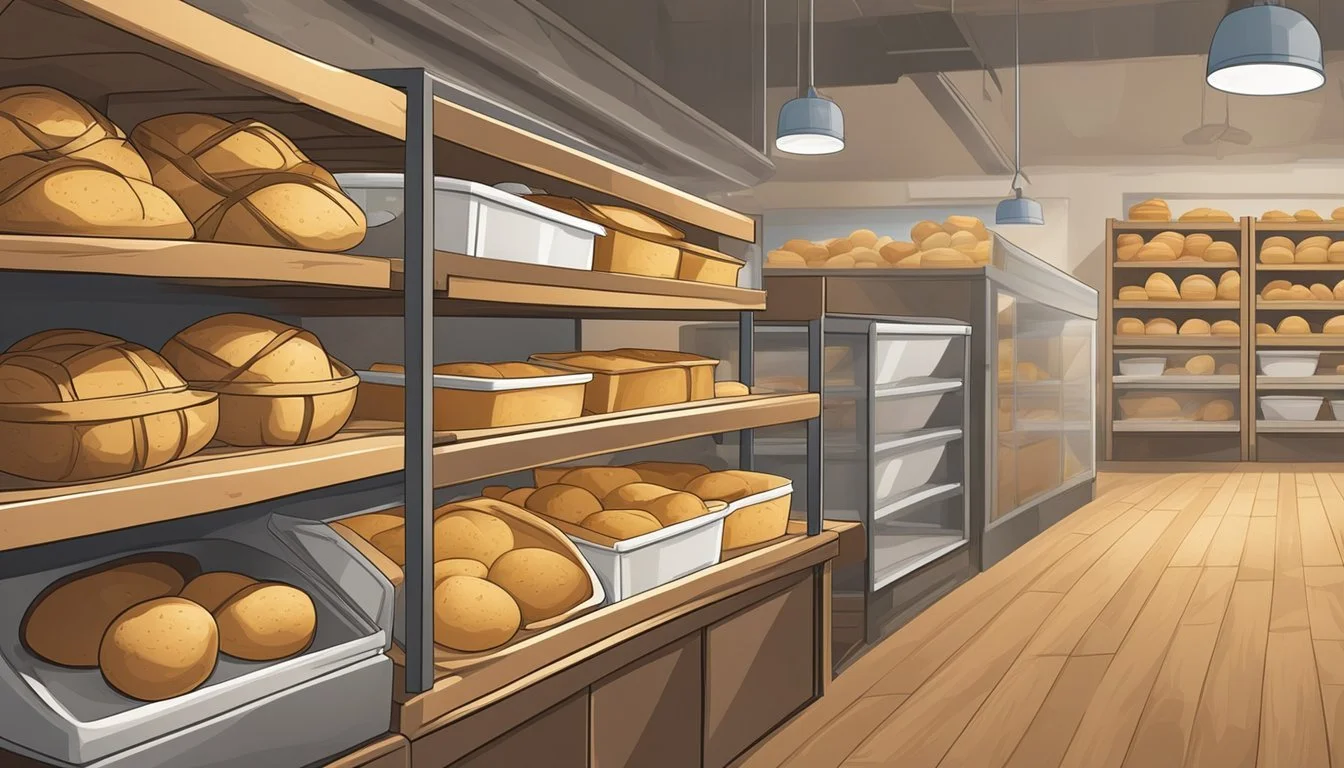Potato Bread Substitutes
Top Alternatives for Your Recipes
Potato bread, enjoyed for its soft texture and slight sweetness, is a staple in many households. It's a versatile bread that pairs well with both savory and sweet dishes, making it a favorite for sandwiches and toast. However, those following low-carbohydrate, gluten-free, or ketogenic diets may find traditional potato bread incompatible with their nutritional plans. Therefore, there is a growing interest in finding suitable substitutes that offer similar qualities without compromising dietary restrictions.
As consumers become more health-conscious and dietary needs evolve, the demand for alternative bread options has increased. People are looking for substitutes that not only align with their dietary requirements but also provide additional health benefits. Several potato bread alternatives have gained popularity, offering lower carbohydrate counts and being suitable for those with gluten intolerance. These alternatives range from those made with vegetables like cauliflower to various nut-based flours that provide a balance of taste and texture, while also amplifying the nutritional profile of the bread they replace.
Understanding Potato Bread
Potato bread is a unique type of bread that incorporates potatoes into its dough composition, resulting in a distinctive texture and nutritional profile. It stands out due to the added moisture and flavor from the potatoes, differentiating it from traditional wheat bread varieties.
Composition and Qualities
Potato bread contains a mix of regular bread ingredients—such as flour, yeast, and salt—and includes potato in various forms, either as fresh mashed potatoes, potato flour, or potato flakes. The inclusion of potatoes affects the bread's qualities significantly:
Texture: The moisture from the potatoes contributes to a tender crumb and a soft texture.
Flavor: A subtle, earthy taste is often present, distinct from other bread types.
Shelf Life: Potato bread tends to have a longer shelf life due to the natural preservative effect of the potatoes.
Role of Potatoes in Bread
Potatoes serve various purposes in bread-making beyond flavor enhancement. They act as a natural softener due to their moisture content, which interacts with the gluten structure of the dough. This interaction often leads to a final product that is tender and stays fresh longer. It can also make the bread more accessible to those with tender palettes or difficulties with harder, chewier textures.
Nutritional Profile
The use of potatoes alters the nutritional makeup of the bread, providing a different range of benefits compared to standard white or whole wheat bread:
Nutrient Content in Potato Bread Fiber Higher than white bread Potassium Significant amount present Vitamin C Present due to potatoes Carbohydrates Comparable to white bread Protein Slightly protein-rich Calories Generally lower than white bread
Potato bread offers a source of resistant starch, which may promote gut health and contribute to the feeling of fullness, potentially aiding in weight management. Furthermore, the additional nutrients from the potatoes, such as vitamin C and potassium, contribute to the bread's overall nutritional value.
Common Potato Bread Substitutes
In the quest for suitable substitutes for potato bread, one may need to consider gluten-free options, grain-based alternatives, vegetable-based replacements, and low-carb choices. Each category offers distinct alternatives that cater to various dietary needs and preferences.
Gluten-Free Alternatives
For individuals with gluten sensitivities, replacing wheat flour with gluten-free alternatives is essential. Almond flour offers a nutritious, gluten-free substitute due to its rich, nutty flavor and high protein content. Another option, tapioca flour, derived from cassava roots, provides a chewy texture similar to gluten. Moreover, potato starch, as its name suggests, serves as a direct substitute due to its gluten-free properties and ability to retain moisture.
Grain-Based Options
When seeking a grain-based substitute for potato flour, rice flour presents a versatile choice. It works well for thickening and baking, delivering a texture that is relatively soft. Another grain-based substitute, cornstarch, is typically used as a thickening agent in recipes and can replace potato flour to create a tender crumb in breads.
Vegetable-Based Replacements
For those looking to add nutritional value from vegetables, sweet potato can be mashed and used as a substitute. It maintains moisture in the bread while also contributing vitamins and fiber. Arrowroot, a starchy substance derived from tropical plants, can be utilized for its gluten-free thickening properties, often in a 1:1 ratio.
Low Carb and Keto-Friendly Choices
Maintaining a low-carb or keto diet doesn't mean foregoing potato bread. Instead, bakers can opt for almond flour or coconut flour, both of which are lower in carbohydrates and high in fiber. These flours create a denser product and may require adjustments in liquid content to achieve the correct dough consistency.
Health Considerations
When selecting potato bread substitutes, one must consider potential health implications such as gluten intolerance, the impact on blood sugar, and alignment with dietary restrictions.
Gluten Intolerance and Celiac Disease
Individuals with celiac disease or gluten sensitivity must avoid gluten, a protein found in traditional wheat bread. Gluten-free diet adherence is crucial for these individuals. Potato bread can still contain gluten, thus those with intolerance should seek substitutes like:
Gluten-free bread made from rice or almond flour
Lettuce wraps for a naturally gluten-free option
Glycemic Impact
Monitoring blood sugar levels is essential, especially for diabetics. The glycemic index (GI) of bread can vary, affecting blood sugar:
Whole grain substitutes often have a lower GI compared to potato bread
Cauliflower rice offers a low-carb, lower GI alternative
Dietary Restrictions
Adhering to specific diets such as keto or low carb requires careful bread alternative choices:
Keto diet followers might opt for egg wraps or cloud bread
Those on a low-carb diet can use substitutes like cauliflower rice wraps or sliced vegetables
Choosing the right potato bread substitute involves balancing dietary needs with personal health goals.
Baking With Substitutes
When one substitutes ingredients in baking, especially for potato bread, it requires precise alterations to maintain the bread's structure and flavor. The correct balance of moistness and texture is key to a successful bake.
Adjusting Recipes
In substituting potato flour in recipes, bakers often have to adjust the liquid content because alternative flours have different absorption rates. For instance, if using mashed potatoes, one should reduce any added liquid by 50%. They may then incrementally add more flour or liquid to achieve a dough that's soft but not sticky. Maintaining the structure of the bread relies heavily on balancing these wet and dry ingredients after making substitutions.
When all-purpose flour or bread flour is used as a substitute, the recipe might require more leavening agents to emulate the rise that potato flour would have contributed. This is crucial as it helps maintain the texture and structure of potato bread.
Achieving Desired Texture
The texture of potato bread is distinct - typically moist and tender. Substitutes should mimic these qualities as closely as possible. Here are some flour substitutes and their rationing:
Substitute Ratio Notes Mashed Potatoes 3:1 Reduce liquid. Aim for a soft, not sticky dough. Rice Flour 1:1 May result in a less tender texture. Quinoa Flour 1:1 Offers a whole-grain alternative with a somewhat different texture. Tapioca Flour 1:1 Similar texture to potato flour. Arrowroot Powder 1:1 Works well for thickening and maintaining moisture.
Achieving the correct texture may also involve tweaking baking times and temperatures, as different flours may alter how a bread bakes through.
Flavor Considerations
Flavor should not be overlooked when making flour substitutions. Potato flour imparts a distinct taste which substitutes may not duplicate. For example, quinoa flour may bring a nuttier profile, and additions to the recipe might be needed to bring the flavor closer to that of traditional potato bread. Ensuring the taste and texture of the bread meet expectations is a delicate balancing act that may require several iterations to perfect.
Creative Uses for Potato Bread Substitutes
This section explores the diverse culinary applications of potato bread substitutes, ranging from meal accompaniments to delightful confections.
Bread Alternatives in Meals
When considering bread alternatives in meals, one can look at flatbread and tortillas as versatile options. They serve as a robust base for sandwiches and wraps, supporting an array of fillings. For those managing their carb intake, lettuce leaves and collard greens make excellent vessels for sandwich ingredients, turning any traditional sandwich into a refreshing, lower-carb alternative.
Sandwiches: Utilize flatbread or whole grain tortillas for a hearty texture.
Wraps: Collard greens are durable and nutritious options for wrapping savory fillings.
Innovative Snacks and Appetizers
Potato bread substitutes can transform snacks and appetizers into innovative culinary creations. For instance, cauliflower can be used to craft a crispy, savory canvas for toppings, as seen in cauliflower crusts, which can host an array of toppings from cheese to fresh vegetables. Vegetables like sliced carrots can function as a nutritious alternative to french fries, offering a lower-calorie option with a satisfying crunch.
French Fries Alternative: Opt for carrot sticks roasted with olive oil and herbs.
Cauliflower Crust: A base for mini-pizzas, substituting typical bread bases.
Desserts and Pastries
Substitutes in desserts and pastries open up a realm where creativity meets tradition. Almond flour and mashed vegetables like sweet potatoes can play pivotal roles in cake recipes, contributing to moistness and adding a subtle, natural sweetness. One could also consider the use of innovative croutons made from vegetables for textural contrast in soups and salads.
Cakes: Replace flour with a mix of almond flour and mashed sweet potatoes for a tender, naturally sweetened cake.
Croutons: For soups, roasted cauliflower can offer a bread-like crunch without the excess carbs.
Storage and Preservation
When it comes to storing potato bread to maintain its freshness and flavor, the key considerations are the storage environment and the method applied. Both storage at room temperature and the use of refrigeration can play crucial roles in extending the shelf life of potato bread.
Extending Shelf Life
Room Temperature: To keep potato bread fresh at room temperature, it should be stored in a cool, dry place away from direct sunlight. Placing it in a bread box or wrapping it in a paper bag can help maintain its moisture level and prevent staleness for a couple of days.
Dehydrators: For those looking to keep their potato bread edible for an extended period, a dehydrator can be used to remove moisture. However, this will alter the texture and is best suited for creating bread crumbs or croutons rather than preserving the bread for regular consumption.
Freezing and Refrigeration Tips
Refrigerator: While refrigeration can deter mold growth, it may also expedite the staling process due to moisture loss. If refrigerating, it is advised to consume the bread within a few days to enjoy its best quality.
Freezer: Freezing is the most effective method for long-term preservation of potato bread. When freezing, one should:
Slice the bread before freezing for easy portioning.
Wrap slices in cling wrap and then foil to protect against freezer burn.
Store in an airtight container or freezer bag.
Utilizing these methods will help to preserve potato bread for future enjoyment, ensuring minimal waste and consistent taste.
Choosing the Right Substitute for Your Needs
When selecting a substitute for potato bread, one must consider the impact on taste, texture, and dietary requirements as well as the ease of substitution based on what's readily available.
Taste and Dietary Preferences
For those seeking to maintain the earthy flavor typical of potato bread, using unseasoned mashed potatoes as a substitute works well. The recommended ratio is three quarters of a cup of mashed potatoes for every quarter cup of potato flour typically used. Adjustments should be made to liquid ingredients to ensure the dough retains its desired consistency.
For a gluten-free alternative, potato flakes or flours such as rice, quinoa, and arrowroot maintain a similar texture to potato bread and are simple to integrate into recipes in a 1:1 ratio with potato flour. This shift is particularly important for those avoiding refined wheat while still desiring that distinctive taste and texture.
Availability and Convenience
For home bakers with a well-stocked pantry, potato flakes are an excellent substitute — one simply adds water to these dehydrated potatoes to replicate the moisture and consistency of potato water in recipes. Arrowroot powder and rice flour are also pantry staples that can be used in equal measure to potato flour to thicken bread doughs without any significant change to the color or flavor.
When convenience is crucial, and time is of the essence, one can avoid elaborate preparations by utilizing common replacements that are easy to make. Each substitute comes with its potential adjustment in color and flavor, demanding a discerning eye to match the specific needs of the recipe at hand.


